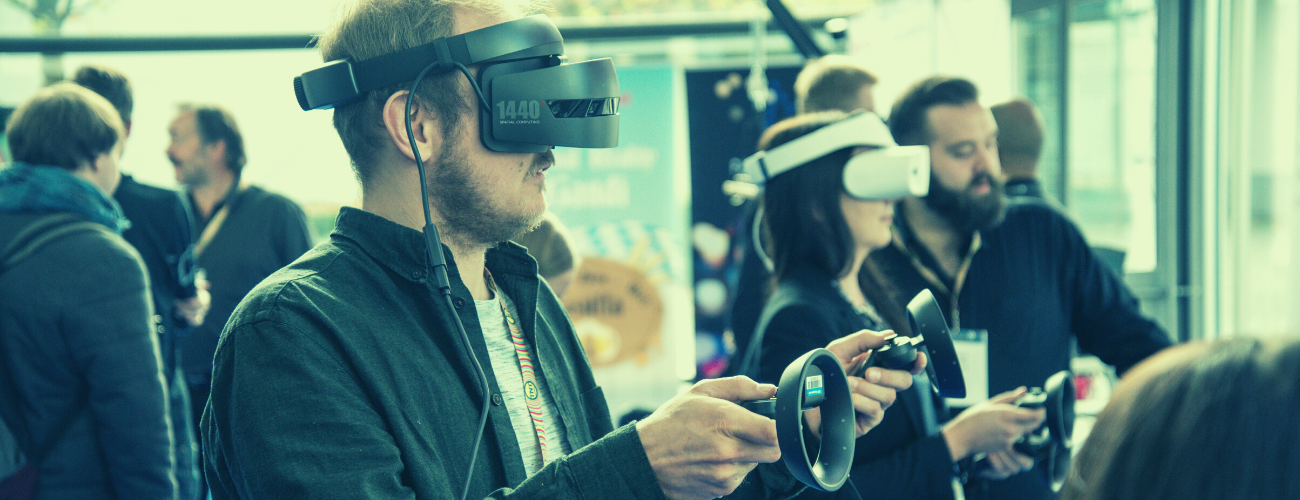According to a recent NewtonX B2B panel survey on the subject issued to 1,000 senior level executives at Fortune 5,000 companies. This sentiment is aligned with investment in the space: of the $4B invested in VR in 2017, only approximately $10M of that went to marketing/advertising and solutions or services. And yet, numerous high profile companies including Jordan Brand, Boursin (the cheesemaker), Adidas, and Lowes. Can VR for marketing ever move past the high profile stunt phase, though?
NewtonX conducted ten qualitative interviews with thought leaders in the VR for enterprise space in addition to the previously mentioned VR survey to identify whether the technology does have application in enterprise, and if so, to what extent it can offer strategic value.
How Brands Are Using VR/AR For Marketing Now
Activewear brands such as Adidas, Jordan Brand, and Toms have used VR to give customers branded experiences. For instance, in 2017 Adidas used VR to allow users to follow and “climb with” two extreme athletes on their mountain climbing journey. Users could grab ahold of rocks with or ahead of the actual climbers, and watch their journey in 3D. Similarly, Toms used VR to bring customers on a virtual “giving” trip through Peru, where the shoe-giving team visits a school of children and gifts them Toms shoes. Jordan Brand took a slightly different approach, using VR to recreate Michael Jordan’s 1988 dunk from the free throw line to underscore the alignment of the brand with the legendary basketball star.
The question remains, though, whether these tactics are truly “experiential marketing” or are just one-off gimmicks. The VR marketing experiences range from the more practical (VR rock climbing is, after all, fun), to the silly: Boursin’s VR experience, for instance, took users “flying” through a stocked refrigerator.
ROI from VR Marketing: Is It Worth It?
Developing a VR campaign is expensive and has a limited audience compared with social media, Google, and even television and billboards.
Some companies, such as OmniVirt, which recently partnered with Turner Broadcasting to launch an Adult Swim VR ad campaign, have attempted to turn VR into a traditional marketing and advertising platform with conversion metrics and ROI, though. The company works with the New York Times, Bloomberg, Netflix, and Google — but what it offers is not what we typically think of as VR (headsets and immersive experiences). Rather, it offers interactive, navigable 360-degree content and videos, that are otherwise embedded as a normal video or photo would be. The company claims that this format results in 10x higher engagement, 5x higher brand recall, and 300% higher click through rates.
Indeed in the NewtonX survey, 46% of executives said they have thought about or would be open to trialing interactive advertising and marketing experiences. That said, however, openness to interactive marketing decreased dramatically to 13% when the respondents were asked the same question but with experiences that required equipment such as headsets or hand sensors (like the ones needed to “climb” in the aforementioned Adidas campaign). While The New York Times distributed 1M Google Cardboard headsets to readers when they launched their visual stories app, NYTVR, this is a harder initiative to sell for advertising and marketing campaigns not centered around a release.
Monetizing VR Will Be Difficult For Many Non-Publishing Marketing Departments
OmniVirt’s clients are mostly publishing and content platforms. Because these businesses depend on interaction and engagement, using a 360-degree interactive medium for marketing and advertising could increase interest in the content itself. However, for enterprises that aren’t publishing platforms, this form of marketing will really only have place in demoing, and even then can be a clunkier medium than video.
Despite the hype around VR as a tool for experiential marketing and advertising, based on the NewtonX research on the subject, the only truly valuable enterprise applications of the technology are 360-degree interactive content on publishing platforms, and potentially demos for certain products. While traditional headset VR can operate as a fun, interactive component of a large launch or event, on its own it is not a compelling enough use case for VR in marketing.

